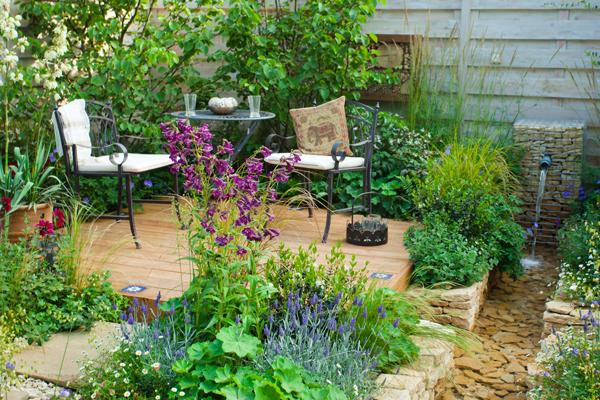Gardening is a wonderful way to relieve stress, connect with nature and see the fruits of your labor. Additionally, it is a hobby that takes a lot of patience, understanding and planning. With that said, gardening can become especially difficult during the current California drought.
Fortunately, there are six do-it-yourself (DIY) methods that will help keep your garden and landscape in tip-top shape and limit your water usage.
1. Develop a plan of action for your garden landscape
Planning is probably the most important DIY technique you can apply. Due to the California drought, you should definitely focus on water saving. Other key areas your plan should account for include:
- Regional and microclimatic conditions of your landscape
- Existing vegetation
- Topography
- Intended uses of property
- And last but not least, the grouping of plants by need of water, sun or shade requirements, and preferred soil conditions
Every environment is different, so this information will vary. Once you’ve researched and gathered the necessary information, you can begin tailoring a more detailed plan that meets your needs.
2. Use native plants
Consider preserving any existing plant life thriving in your yard while planning your garden beds because they have already acclimated to your yard’s particular environment and soil composition. Many plants can be transplanted to stay in designated beds or split to reduce their footprint so that you can incorporate other flora for a great mix.
3. Maintain healthy soils
Every garden needs a healthy foundation of soil. That is why it’s a good idea to test soil before you start your improvements. Basic soil tests determine if soil is neutral, alkaline or acidic. After the soil type is determined, you can adjust the soil to the appropriate pH level you require. Generally, local garden centers offer testing kits and proper amendments. Cooperative Extension offices can also provide soil sample testing. Check your local office for locations and fees.
4. Use mulch wisely
Mulch can be your best friend if applied correctly. For example, it offers better water retention by minimizing evaporation, reduces weed growth, moderates soil temperature and prevents erosion. Another benefit, if you are using organic mulch, is that it improves soil conditions as it decomposes. Ultimately, this will give your soil increased longevity.
There can also be some negatives to using mulch. If you go overboard and apply too much mulch, it restricts water flow and slows root growth.
5. Be selective when adding turf
Turf grass can certainly enhance the look and feel of your landscape. However, a drought can devastate its overall growth. Therefore, you must be strategic with where and how much turf grass you plant.
Small play or recreation areas are a great location in regions that often experience droughts. When adding turf to areas like this, group the turf to increase watering efficiency and reduce evaporative and runoff losses. Furthermore, many types of grass can withstand drought, but it’s best to select one that becomes dormant during these conditions.
6. Water wisely and provide regular maintenance
To promote strong root growth during a drought, you will need to water when plants need it. So depending on the soil type, you may need to water less deeply and in multiple cycles. However, always adhere to water restrictions. During the current drought, San Jose Water has several water use restrictions in place
- Watering is allowed between 8 p.m. and 10 a.m. Each irrigation zone can run for a maximum of 15 minutes. Exceptions are made for drip irrigation and low precipitation sprinkler heads.
- You must use a nozzle on your hose when manually watering
- Effective July 1, 2016, you may water outdoors up to three (3) days per week
- Even numbered address water on Tuesday, Friday, and Sunday
- Odd numbered address as well as properties with address water on Monday, Thursday, and Saturday.
With that said, use manual watering, but always with a nozzle on the hose, since it’s more efficient than automated methods (sprinkler systems). According to the American Water Works Association, “Households that water manually use 33% less water outdoors compared to those who utilize an automated system.”
There are many DIY techniques you can employ to keep your garden or landscape in great condition, even during a drought. The main thing to remember is to have a plan of action that implements water conservation best practices.
